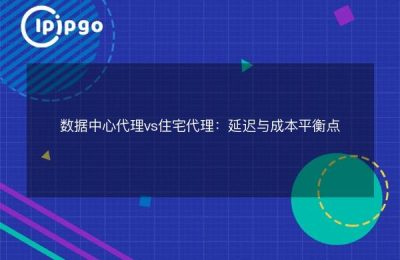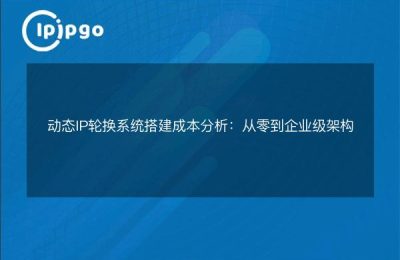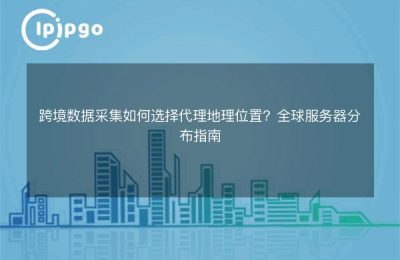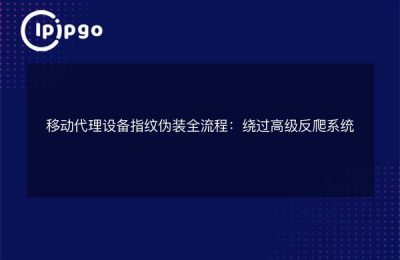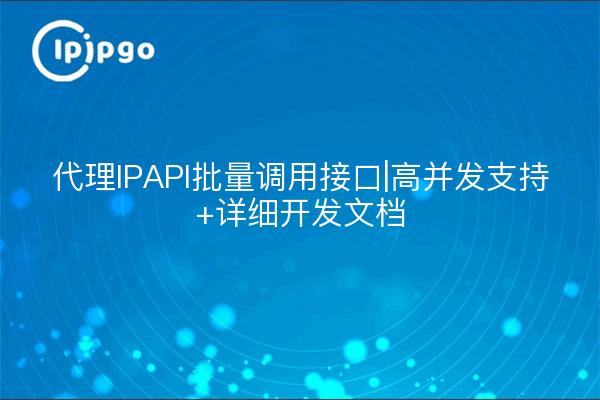
Core Logic for Proxy IP Interface Bulk Calls
When you need to handle hundreds or thousands of network requests at the same time, a single IP can easily trigger a limit. Then you need to rotate the proxy IP mechanism, so that each request goes to a different exit IP. ipipgo's API interface as an example, the principle of its batch call: developers only need to send a request to the specified API address, the system will automatically allocate the available IP, and each request by default to switch to a different residential IP.
There are three key parameters to keep in mind for the specific implementation:
1. Concurrent thread control: Recommended to dynamically adjust concurrency according to target site response speeds
2. Request interval settings: Randomized delay of 0.5-3 seconds is more in line with human operating characteristics
3. Failure to retry mechanism: automatically switch to a new IP and retry when an IP request fails
Practical Configuration Scenarios for High Concurrency Scenarios
The distributed architecture of ipipgo is capable of hosting 5000+ requests per second, but in practice it is recommended to configure the parameters according to this table:
| application scenario | Recommended concurrency | IP switching mode |
|---|---|---|
| data acquisition | 50-100 threads | Automatic switching per request |
| automated test | 20-30 threads | Change IP pool every 5 minutes |
| market surveillance | 10-20 threads | IP fixed 24 hours |
The right way to open development documentation
Many developers ignore hidden tricks in the documentation. Taking the API documentation for ipipgo as an example, these three features are particularly useful:
1. IP geographic pinpointing: You can specify city-level IPs by adding the ?city= parameter.
2. Automatic protocol adaptation: Support HTTP/HTTPS/SOCKS5 protocol automatic switching
3. Connection pool preloading: Early acquisition of IP pools reduces 30% request latency
An example of the Python call is given here:
import requests
proxies = {
'http': 'http://username:password@gateway.ipipgo.com:端口',
'https': 'http://username:password@gateway.ipipgo.com:端口'
}
response = requests.get('destination URL', proxies=proxies, timeout=10)
Frequently Asked Questions QA
Q: How do I manage invalid IPs when making bulk requests?
A: It is recommended to work with ipipgo's real-time status interface to automatically cull from the IP pool when IP failure is detected
Q: Does the free trial version support API calls?
A: ipipgo all proxy packages are open API interface, trial stage is recommended to control the request per second does not exceed 10 times!
Q: How to choose between dynamic IP and static IP?
A: Dynamic residential IP for high-frequency requests, static enterprise IP for fixed authentication, both switchable at any time in the ipipgo console
Guide to avoiding the pit: these mistakes should not be made
Based on the 3000+ cases we've handled, there are three most common pitfalls that developers step into:
1. Timeout set too short: A timeout of at least 10 seconds is recommended to avoid invalidating quality IPs by mistake
2. Ignoring IP geography: Add country=CN parameter to bulk IP acquisition to ensure geographic balance.
3. Leakage of authentication information: Remember not to explicitly store API keys in front-end code!
When encountering complex scenarios, you can directly call ipipgo's technical support interface, whose error code table contains 18 kinds of abnormal state description. For example, code 504 means that the current region has insufficient IP inventory, which can be recovered immediately by automatically switching the alternate region parameters.

